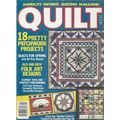Lancaster, Osbert - Would Not Release Him Until the Last Echoes.. - art postcard
- Condition : Used
- Dispatch : 2 Days
- Brand : None
- ID# : 200610706
- Quantity : 1 item
- Views : 259
- Location : United Kingdom

- Seller : justthebook (+1703)
- Barcode : None
- Start : Sun 02 May 2021 23:30:17 (BST)
- Close : Run Until Sold
- Remain : Run Until Sold
More Listings from This Seller view all
Seller's Description
- Art Postcard
- Work of art title: "Would Not Release Him Until the Last Echoes of the Clapping Had Died Away" Chapter X
- Artist (if known): Osbert Lancaster - from one of 12 paintings in the Randolph Hotel Oxford...illustrating Sir Max Beerbohm's Novel 'Zuleika Dobson'
- Media or other details: illustration / painting
- Publisher / Gallery: Trust Houses Ltd.
- Postally used: no
- Stamp & postmark details (if relevant):
- Size: Modern
- Notes & condition details:
NOTES:
Size: 'Modern' is usually around 6in x 4in or larger / 'Old Standard' is usually around 5½in x 3½in. Larger sizes mentioned, but if you need to know the exact size please ask as this can vary.
All postcards are not totally new and are pre-owned. It's inevitable that older cards may show signs of ageing and use, particularly if sent through the post. Any faults other than normal ageing are noted.
Stock No.: A1234
Please ask if you need any other information and I will do the best I can to answer.
------------------------------------------------
Postage and packing charge should be showing for your location (contact if not sure).
UK - PayPal, Cheque (from UK bank) or postal order
I will give a full refund if you are not fully satisfied with the postcard.
----------------------------------------------
Sir Osbert Lancaster, CBE (4 August 1908 – 27 July 1986) was an English cartoonist, architectural historian, stage designer and author. He was known for his cartoons in the British press, and for his lifelong work to inform the general public about good buildings and architectural heritage.
The only child of a prosperous family, Lancaster was educated at Charterhouse School and Lincoln College, Oxford; at both he was an undistinguished scholar. From an early age he was determined to be a professional artist and designer, and studied at leading art colleges in Oxford and London. While working as a contributor to The Architectural Review in the mid-1930s, Lancaster published the first of a series of books on architecture, aiming to simultaneously amuse the general reader and demystify the subject. Several of the terms he coined as labels for architectural styles have gained common usage, including "Pont Street Dutch" and "Stockbrokers' Tudor", and his books have continued to be regarded as important works of reference on the subject.
In 1938 Lancaster was invited to contribute topical cartoons to The Daily Express. He introduced the single column-width cartoon popular in the French press but not until then seen in British papers. Between 1939 and his retirement in 1981 he drew about 10,000 of these "pocket cartoons", which made him a nationally known figure. He developed a cast of regular characters, led by his best-known creation, Maudie Littlehampton, through whom he expressed his views on the fashions, fads and political events of the day.
From his youth, Lancaster wanted to design for the theatre, and in 1951 he was commissioned to create costumes and scenery for a new ballet, Pineapple Poll. Between then and the early 1970s he designed new productions for the Royal Ballet, Glyndebourne, D'Oyly Carte, the Old Vic and the West End. His productivity declined in his later years, when his health began to fail. He died at his London home in Chelsea, aged 77. His diverse career, honoured by a knighthood in 1975, was celebrated by an exhibition at the Wallace Collection marking the centenary of his birth and titled Cartoons and Coronets: The Genius of Osbert Lancaster.
Although the Beaverbrook papers were editorially right-wing, Lancaster was never pressured into following a party line.[48] His inclination was to satirise the government of the day, regardless of party, and he felt that his overtly partisan colleagues such as David Low and Vicky were constrained by their political allegiances.[103] He wrote, "It is not the cartoonist's business to wave flags and cheer as the procession passes; his allotted role is that of the little boy who points out that the Emperor is stark naked".[104]
In the late 1940s Lancaster developed a repertory company of characters in whose mouths he put his social and political jokes. The star character was Maudie, Countess of Littlehampton, who managed to be shrewd and flighty simultaneously. She began as what her creator called "a slightly dotty class symbol", but developed into "a voice of straightforward comment which might be my own".[105] Maudie's political views were eclectic: "on some matters she is far to the right of Mr Enoch Powell, and on others well to the left of Mr Michael Foot".[106] Her comments on the fads and peculiarities of the day caught the public imagination;[105] the art historian Bevis Hillier calls her "an iconic figure to rank with Low's Colonel Blimp and Giles's Grandma".[107] Various candidates have been proposed as the model for Maudie,[n 14] but Lancaster maintained that she was not based on any one real person.[111]
Other regular characters included Maudie's dim but occasionally perceptive husband Willy; two formidable dowagers: the Littlehamptons' Great-Aunt Edna, and Mrs Frogmarch, a middle-class Tory activist;[n 15] Canon Fontwater, a personification of the Church Militant; Mrs Rajagojollibarmi, an Asian politician; and Father O'Bubblegum, Fontwater's Roman Catholic opposite number; they are seen in the illustration to the right, from the 1975 collection Liquid Assets. Lancaster's younger contemporary Mark Boxer remarked on the way some characters such as the Canon had developed "square characteristics to fit into the shape of the cartoon box".[47] In his wartime cartoons Lancaster often caricatured Mussolini and Hitler; later he rarely portrayed current politicians, although Knox includes a few pocket cartoons from the 1960s in which General de Gaulle, Harold Wilson and others appear.[113] Richard Nixon featured in a few pocket cartoons during the Watergate scandal; in one he is drawn standing by a flushing lavatory, saying innocently, "Tapes? What tapes?"[114]
The novelist Anthony Powell commented that Lancaster, having carefully invented and stylised his own persona – "bristling moustache, check suits, shirt and tie in bold tints" – created similarly stylised characters for his cartoons, achieving "the traditional dramatic effectiveness of a greatly extended cast for a commedia dell'arte performance".[115]
Listing Information
| Listing Type | Gallery Listing |
| Listing ID# | 200610706 |
| Start Time | Sun 02 May 2021 23:30:17 (BST) |
| Close Time | Run Until Sold |
| Starting Bid | Fixed Price (no bidding) |
| Item Condition | Used |
| Bids | 0 |
| Views | 259 |
| Dispatch Time | 2 Days |
| Quantity | 1 |
| Location | United Kingdom |
| Auto Extend | No |



 for 1 item(s)
for 1 item(s)

















